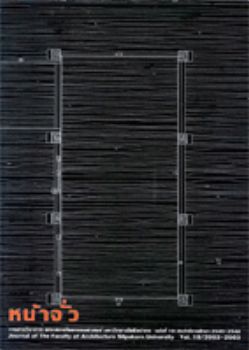หลองข้าว: สถาปัตยกรรมพื้นบ้านล้านนา
บทคัดย่อ
หลองข้าวเป็นสิ่งปลูกสร้างสําคัญที่สะท้อนถึงวัฒนธรรมความเป็นอยู่ของผู้คนในสังคมเกษตรกรภาคเหนือ ในอดีตหากแต่ในปัจจุบันหลองข้าวลดบทบาทความสําคัญ และลดจํานวนลงที่เหลืออยู่ก็มีสภาพทรุดโทรมขาดการดูแล เนื่องจากไม่ได้ใช้ประโยชน์แล้ว จึงควรที่จะมีการศึกษารวบรวมข้อมูลที่เกี่ยวกับหลองข้าวในเชิงสถาปัตยกรรมไว้เป็นข้อมูลที่สําคัญต่อไป การศึกษานี้ได้รวบรวมกรณีศึกษาหลองขัาว จํานวน 12 หลัง ในพื้นที่ หมู่ที่ 4 และหมู่ที่ 5 ต.แม่เหิยะ อ.เมือง จ.เชียงใหม่ และประมวลเป็นรูปแบบของหลองข้าว 3 แบบ จากคณะผู้ดําเนินงาน
Granary : The Architecture of Lanna
Granaries are important structures reflecting culture and ways-of-life of an agricultural society in Northern Thailand in the past. However, granaries now are declined insignificance and numbers. The ones exist are deteriorated and left unused. Therefore, it is necessary to gather and document data pertaining to the architecture of Northern Thai grannaries. This study contains 12 case studies of granaries in Moo 4 and Moo 5 in Tambol Maehia, Amphoe Muoeng, Chiang Mai Province. Three types of granaries are presented.





